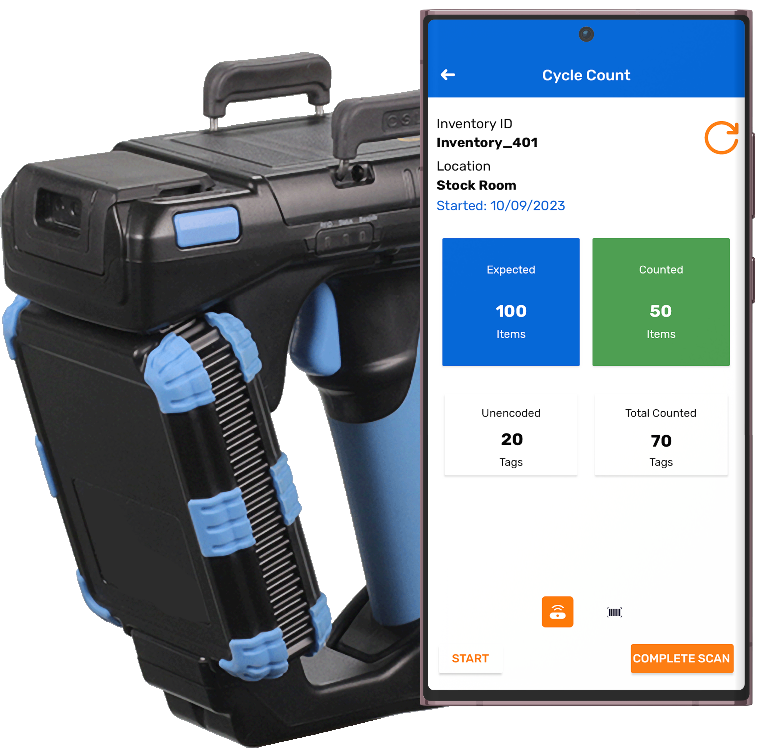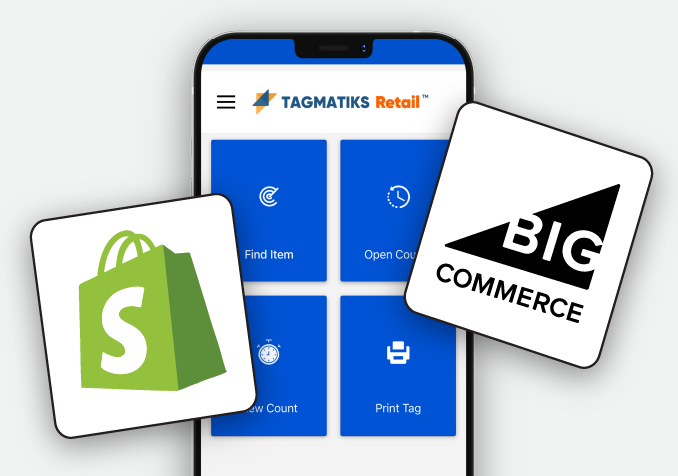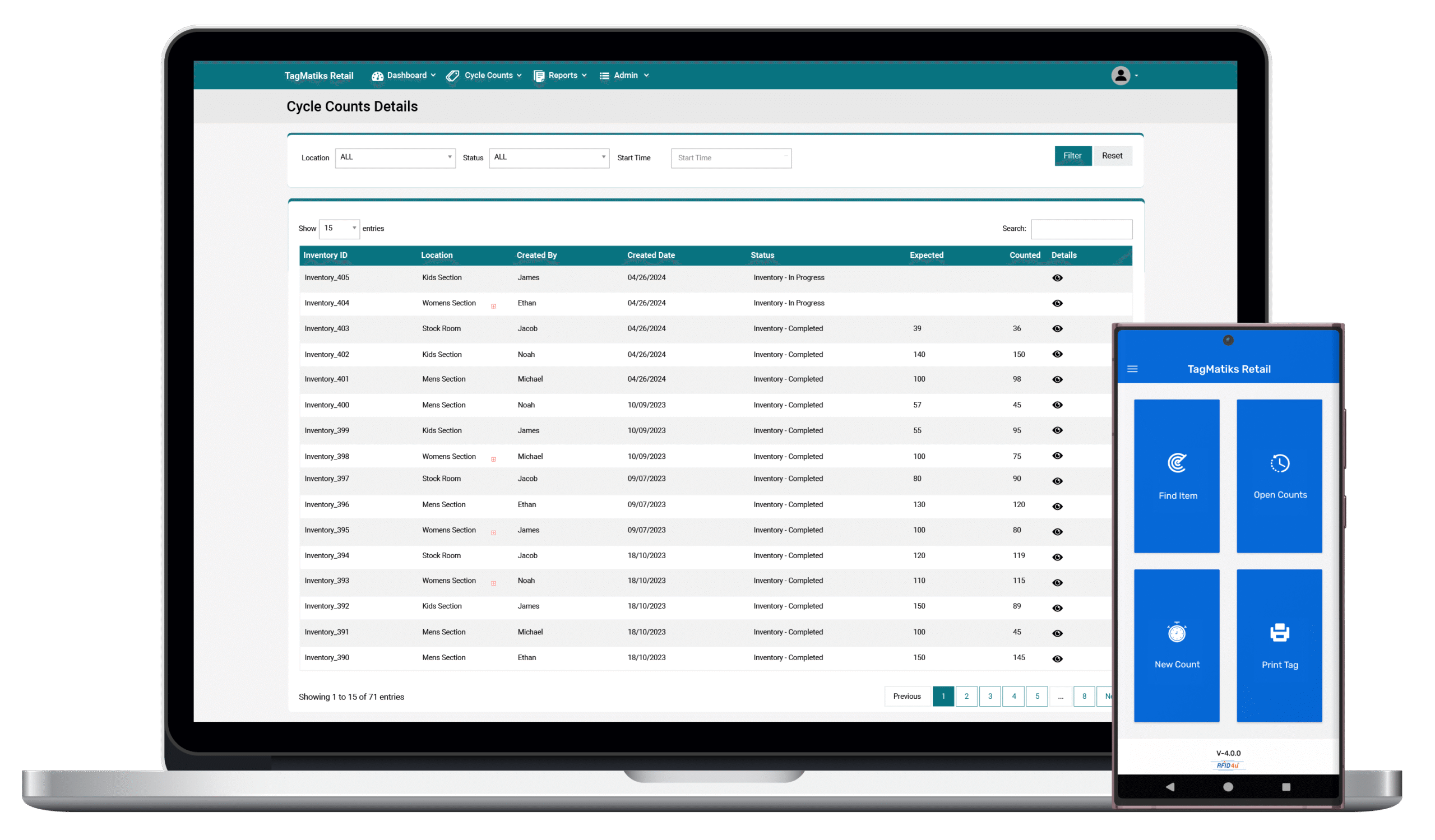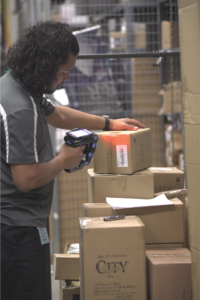Features & Benefits
Why TagMatiks Retail is Your Solution to Managing Your Inventory Better with RFID
Easy Installation & Setup
Available as an out of the box solution, TagMatiks Retail is ready to use. With built in support including knowledge articles, videos, quick start guides and more, you'll be up and running with ease.
Quick RFID Printing Workflow
TagMatiks Retail includes an off the shelf workflow to print and encode RFID labels for in store / warehouse labeling. With built in serialization, the solution makes it easy to keep your inventory RFID tagged.
Robust Mobile Apps & Cloud Portal
The solution includes mobile applications on both iOS and Android for ease of deployment that connect directly with a cloud portal to analyze data. The mobile apps make it easy to collect RFID data on the go while the cloud portal makes it easy to visualize data that is collected and manage the solution.
Substantial Out of the Box & Custom Reports
With ready to go reports such as cycle count history, inventory item history, location inventory reports, and more, TagMatiks Retail allows you to leverage RFID collected data. Download and share reports in a variety of formats and even create custom reports to further leverage the data that is collected.
Inventory Reconciliation
After completing the cycle counts, TagMatiks Retail has a unique yet powerful feature for simple reconciliation to under- stand variances found during the counting process.
Inventory Locating Feature
Use RFID handhelds to pinpoint inventory to quickly identify products that may be misplaced or are not able to be found.
RFID Based Cycle Counting
Use RFID labels to cycle count inventory and quickly identify matched, missing and misplaced products.
In Built Analytics Powered By RFID and AI
As you collect RFID powered data, use AI and RFID data to review analytics about your operations and inventory.
Powerful APIs for Simple Integration To Other Systems
Easy integration of RFID data to other systems such as POS, WMS, or ERP applications using the out of the box APIs.
Extensive RFID Device Support
TagMatiks Retail supports exten- sive RFID device options for ease of adoption and flexibility of rollouts.

TagMatiks Retail is designed for retailers including:
-
General Merchandise Retailers
-
Apparel and Soft Goods
-
Luxury Goods
-
Sporting Goods
-
Jewelry
-
Bridal
TagMatiks Retail RFID Software integrated with Shopify and BigCommerce
RFID retail software seamlessly integrates with Shopify and BigCommerce, enabling real-time inventory tracking, automated stock updates, and enhanced loss prevention. Streamline operations with fast, accurate scanning, reducing manual errors and improving stock visibility. Boost efficiency, optimize replenishment, and enhance the shopping experience with a powerful, cloud-based RFID solution.

Case Study
Workflow Automation using RFID & Mobility technology with the TagMatiks platform
Why Use TagMatiks Retail for RFID in Your Retail Store

Inventory Excellence
Use RFID handhelds to cycle count inventory. Using RFID handhelds drastically reduces time that is required to count inventory and improves inventory accuracy.

Configurability
TagMatiks Retail includes a variety of configurations to make sure the solution is adoptable for every retailer.

Enterprise Solution
Packed with extensive enterprise features including being designed for the cloud, TagMatiks Retail makes it easy to manage inventory across a large quantity of retail stores.

Serialization Management
TagMatiks Retail manages your serialization to ensure that your RFID labels are encoded properly and that duplicates don't occur. We even have a complementary solution called TagMatiks Print Manager to make it easy for your suppliers to label your products for you with RFID labels.
Explore TagMatiks Retail
TagMatiks Retail is RFID retail software that elevates inventory management/tracking, reduces shrinkage, and improves visibility
Frequently Asked Questions
What is RFID technology?
How does RFID work in retail?
What are the benefits of using RFID in retail?
Enhanced Visibility: Offers real-time visibility of inventory across the supply chain. Reduced Shrinkage: Deters theft and loss by improving product tracking. Streamlined Operations: Automates inventory counts, reducing the need for manual checks.
Better Customer Experience: Ensures products are always available and easy to find, improving satisfaction.
How can RFID reduce inventory shrinkage?
Can RFID improve the customer shopping experience?
What types of RFID tags are used in retail?
Active RFID Tags: Have their own power source and can send out signals at regular intervals. They are used for high-value item tracking and real-time location services.
Semi-passive RFID Tags: Have a battery to power the chip but rely on the reader for signal transmission. They are used in applications needing greater read range and reliability.
What are the costs associated with implementing RFID in retail?
Are there any privacy concerns with RFID in retail?
How does RFID compare to barcodes in retail?
Read Multiple Tags Simultaneously: RFID can read multiple items at once without line-of-sight.
Greater Data Capacity: RFID tags can store more information than barcodes. Durability: RFID tags are more durable and less prone to damage.



